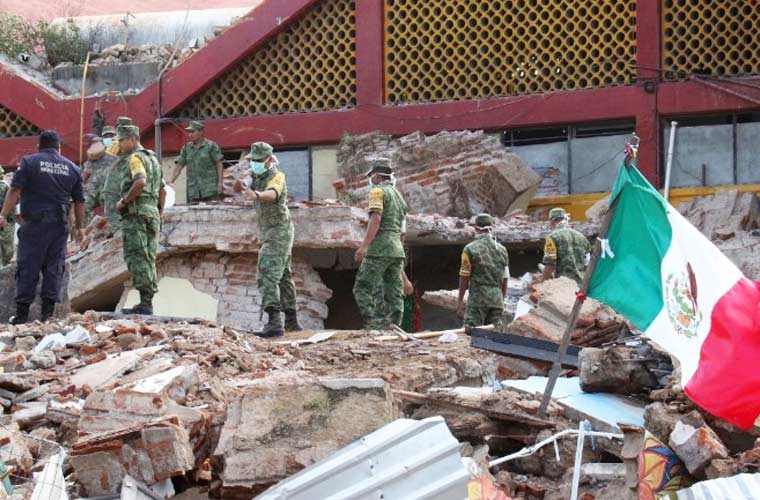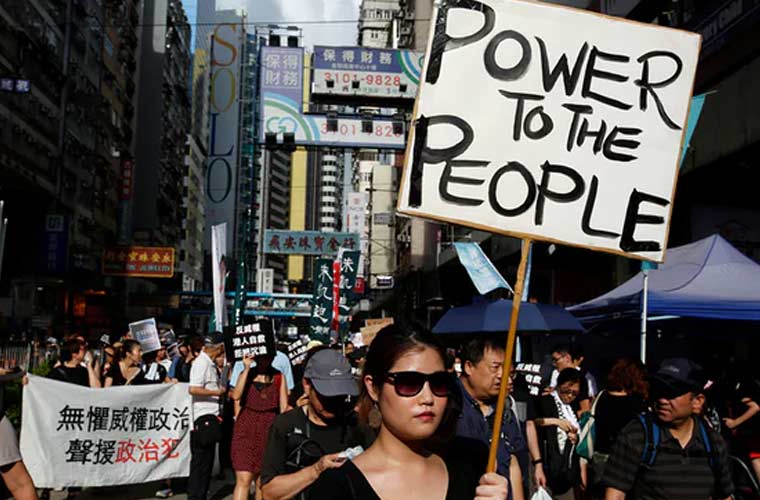Trending Now
- 830 voters names go missing in Kavundampalayam constituency
- If BJP comes to power we shall consider bringing back electoral bonds: Nirmala Sitaraman
- Monitoring at check posts between Kerala and TN intensified as bird flu gets virulent in Kerala
Around The Web
Mexico’s strongest earthquake in a century leaves dozens dead
![]() September 9, 2017
September 9, 2017
By Joshua Berlinger, Mariano Castillo and Ray Sanchez, CNN
At least 61 people have died after the most powerful earthquake to hit Mexico in a century struck off the southern coast.
The magnitude 8.1 quake, which was felt as far as Mexico City and Guatemala City, was registered off Mexico’s southern coast just as heavy rains from Hurricane Katia lashed the east. The epicenter was in the Pacific Ocean, some 600 miles (1,000 kilometers) southeast of the capital and 74 miles (120 kilometers) off the coast.
President Enrique Peña Nieto said the temblor — felt by about 50 million people across the country — was the strongest earthquake Mexico has experienced in 100 years. In September 1985, a magnitude 8.0 earthquake killed an estimated 9,500 people in and around Mexico City.
This one hit late Thursday, when many people were asleep. The states of Chiapas and Oaxaca, home to about 9 million people, are located closest to the earthquake’s epicenter. They are two of the most impoverished areas in Mexico, and were likely hit the hardest.
At least 45 people were killed in Oaxaca state, Civil Protection National Coordinator Luis Felipe Puente said on Twitter. Ten others died in Chiapas state and three were killed in Tabasco, he said.
Mexico’s strongest earthquake in a century leaves dozens dead
CNN Digital Expansion Shoot, Joshua BerlingerMariano Castillo-Profile-Image
By Joshua Berlinger, Mariano Castillo and Ray Sanchez, CNN
Updated 0639 GMT (1439 HKT) September 9, 2017
Now Playing Earthquake shakes…
nepal drone footage earthquake disaster relief orig_00011504.jpg
Five things you should know about earthquakes
weather 15 years of earthquakes jj nccorig_00004316.jpg
15 years of earthquakes in 45 seconds
earthquake early warning system orig mg_00002310.jpg
Why aren’t earthquake warnings better?
Now Playing
Earthquake shakes buildings in Mexico
Witness: Quake one of the strongest I’ve felt
nepal drone footage earthquake disaster relief orig_00011504.jpg
Five things you should know about earthquakes
weather 15 years of earthquakes jj nccorig_00004316.jpg
15 years of earthquakes in 45 seconds
earthquake early warning system orig mg_00002310.jpg
Why aren’t earthquake warnings better?
Earthquake shakes buildings in Mexico
Witness: Quake one of the strongest I’ve felt
nepal drone footage earthquake disaster relief orig_00011504.jpg
Five things you should know about earthquakes
Story highlights
Quake was relatively shallow, which means more intense shaking
“High casualties and extensive damage are probable,” USGS reports
(CNN)At least 61 people have died after the most powerful earthquake to hit Mexico in a century struck off the southern coast.
The magnitude 8.1 quake, which was felt as far as Mexico City and Guatemala City, was registered off Mexico’s southern coast just as heavy rains from Hurricane Katia lashed the east. The epicenter was in the Pacific Ocean, some 600 miles (1,000 kilometers) southeast of the capital and 74 miles (120 kilometers) off the coast.
President Enrique Peña Nieto said the temblor — felt by about 50 million people across the country — was the strongest earthquake Mexico has experienced in 100 years. In September 1985, a magnitude 8.0 earthquake killed an estimated 9,500 people in and around Mexico City.
This one hit late Thursday, when many people were asleep. The states of Chiapas and Oaxaca, home to about 9 million people, are located closest to the earthquake’s epicenter. They are two of the most impoverished areas in Mexico, and were likely hit the hardest.
At least 45 people were killed in Oaxaca state, Civil Protection National Coordinator Luis Felipe Puente said on Twitter. Ten others died in Chiapas state and three were killed in Tabasco, he said.
Latest updates
— A red alert was issued by the US Geological Survey (USGS) PAGER system, which predicts economic and human loss after earthquakes. “High casualties and extensive damage are probable and the disaster is likely widespread. Past red alerts have required a national or international response,” it said.
— The USGS reported multiple aftershocks, including at least six with tremors measuring above 5.0 in magnitude.
— The quake had a depth of 69.7 kilometers (43 miles), according to the USGS, which makes it particularly shallow, said Jana Pursely, a staff geophysicist. That means more intense shaking.
— A tsunami was confirmed in Mexico, with one wave coming in at 3 feet (1 meter), according to a tweet from the National Weather Service’s Pacific Tsunami Warning Center. Tsunami waves taller than 10 feet (3 meters) could hit the coast of Mexico, while 3-foot waves could reach as far as Ecuador, New Zealand and Vanuatu, it said.
— Mexico’s army, marines and federal police were mobilized to respond, Peña Nieto said.
— About 1.85 million homes lost electricity, but 74% of them have had service returned, Peña Nieto said. Some people lack water service, and it may take 36 to 48 hours to get it back up and running.
— Toppled buildings could be seen on video shared on social media from the city of Juchitan in Oaxaca state, where a local councilwoman said co-workers were trapped in the municipal building. A hospital there collapsed, and patients were seen on another video receiving treatment in an open field.
— Four people may be trapped inside a collapsed hotel in Oaxaca, Oaxaca Civil Protection Director Amado Bohorquez told CNN.
Relief efforts
Hurricane Katia will complicate the delivery of relief supplies to the hard-hit regions, Eduardo Mendoza, general manager of Direct Relief Mexico, told CNN on Friday. Heavy rains from the storm could also contribute to water-borne illnesses, he said.
Large trucks are having a difficult time reaching affected areas, he said, so individuals are now bringing in supplies in their personal cars.
Mendoza said Direct Relief coordinates the delivery of supplies from companies in Mexico and the United States.
“What they really need right now are basic medical supplies for wound care and other trauma care,” he said.
Also needing help are people who fled their residences and left their medications behind.
Mendoza said he felt the earthquake in his Mexico City residence.
“I could see my wall moving half a foot,” he said. He ran outside but the building kept shaking 30 or 40 more seconds, he said.
























